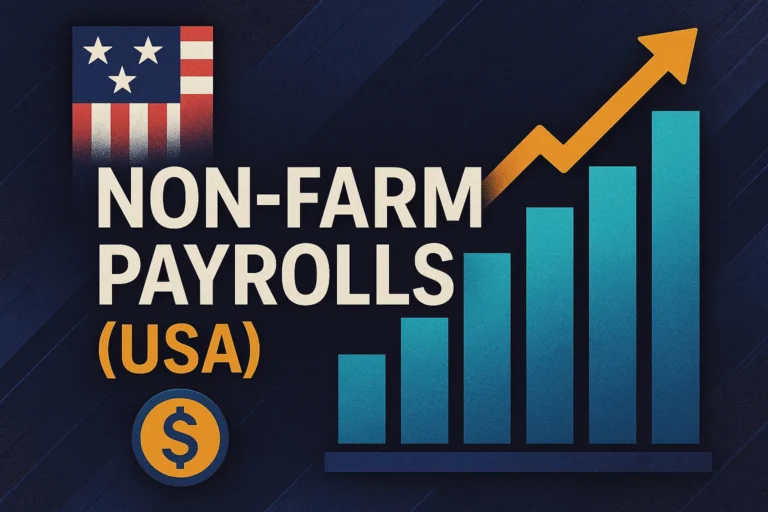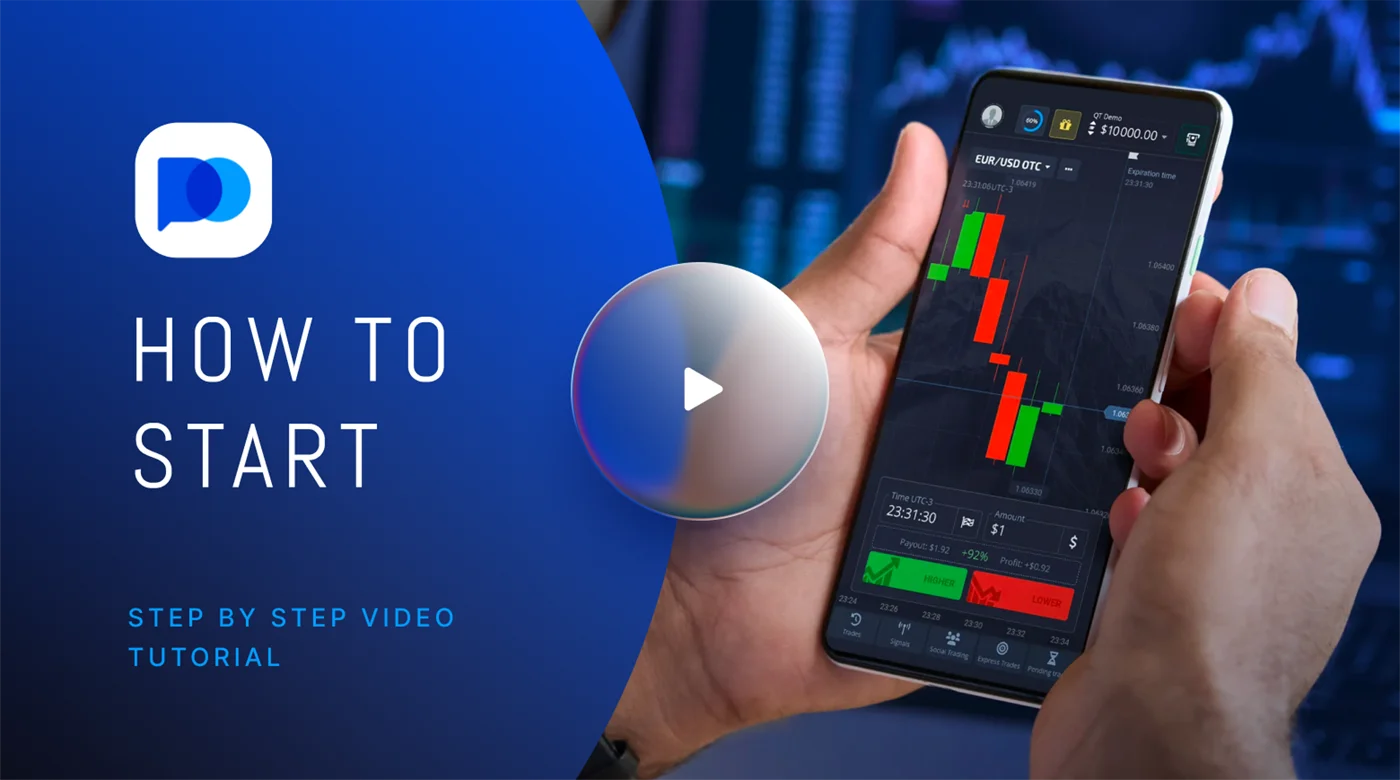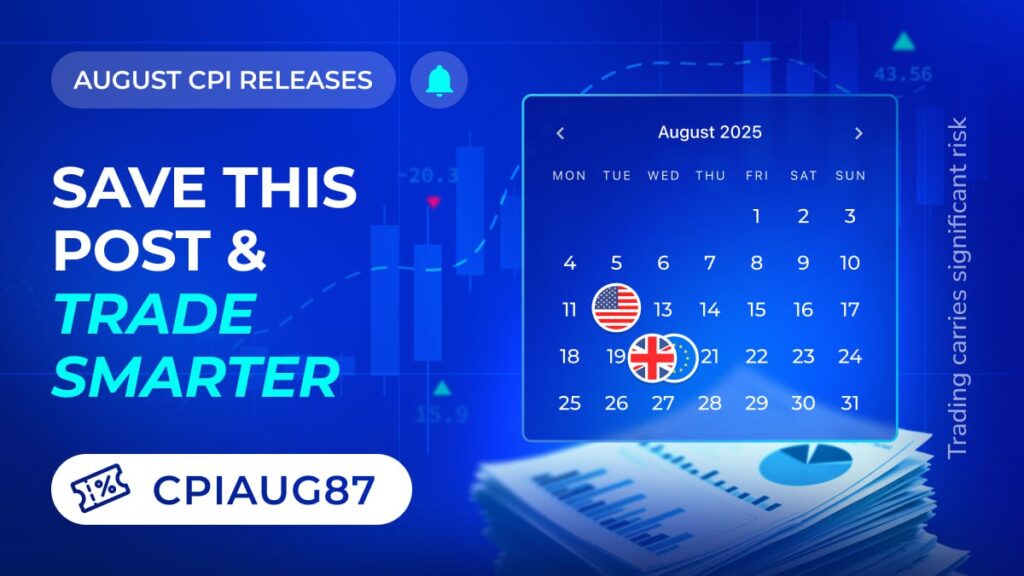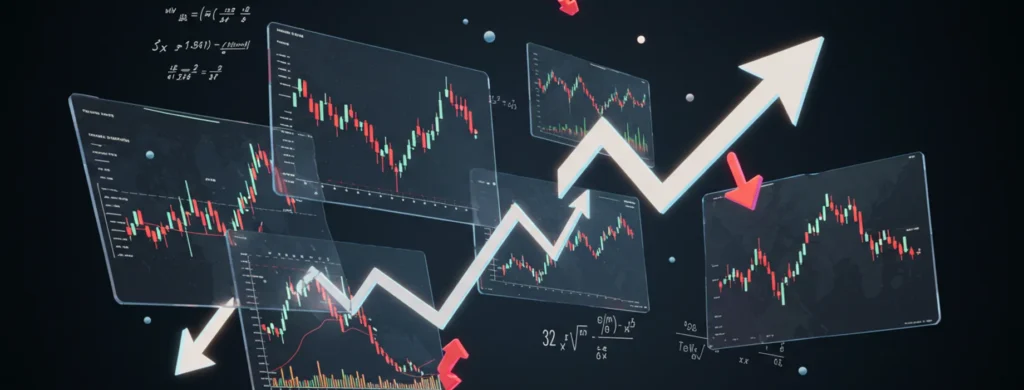News & Events
Knowledge base
News & Events
Knowledge base

Details
Upcoming Events
-
23 AUG 2025
 Eco
Jackson Hole Economic Symposium 2025: A Pivotal Event for Global Financial Markets
Eco
Jackson Hole Economic Symposium 2025: A Pivotal Event for Global Financial Markets -
26 AUG 2025
 Eco
BRICS Summit 2025: Economic Implications of the South Africa Meeting
Eco
BRICS Summit 2025: Economic Implications of the South Africa Meeting -
27 AUG 2025
 Eco
Jackson Hole Economic Symposium 2025: Key Market-Moving Fed Event Overview
Eco
Jackson Hole Economic Symposium 2025: Key Market-Moving Fed Event Overview -
30 AUG 2025
 Eco
EU Inflation Data Release – August 30
Eco
EU Inflation Data Release – August 30 -
1 SEP 2025
 Eco
Non-Farm Payrolls (NFP) Report – Monthly US Employment Data Analysis
Eco
Non-Farm Payrolls (NFP) Report – Monthly US Employment Data Analysis -
4 SEP 2025
 Eco
JOLTS Report: Tracking Labor Market Dynamics
Eco
JOLTS Report: Tracking Labor Market Dynamics

How to Start Trading on Pocket Option | Trading Tutorial
Begin your trading journey with Pocket Option using this comprehensive how to trade guide. Perfect for trading for beginners, learn to register, switch to demo mode for practice, or dive straight into real balance trading.
Discover how to select assets, like the currency pair EUR/USD, and understand the basics of opening a trade.
This video walks you through setting an amount, analyzing trends on the main graph, and setting the expiration time to make a profit. Start trading now with Pocket Option and turn trading knowledge into action.
More infoPlatform updates
-
19 Aug2025
 Best Win Rate Trading Challenge – Pocket Option Broker CompetitionThe Best Win Rate Challenge is your chance to showcase your trading expertise and win valuable rewards. This exclusive competition, hosted by the Pocket Option Broker community, brings together skilled
Best Win Rate Trading Challenge – Pocket Option Broker CompetitionThe Best Win Rate Challenge is your chance to showcase your trading expertise and win valuable rewards. This exclusive competition, hosted by the Pocket Option Broker community, brings together skilled -
13 Aug2025
 Weekend Rush Winners Announced – Congratulations to Our Top TradersWe're excited to celebrate the incredible trading activity from this past weekend! Our Weekend Rush competition has concluded, and we're thrilled to recognize the outstanding performance of our most dedicated
Weekend Rush Winners Announced – Congratulations to Our Top TradersWe're excited to celebrate the incredible trading activity from this past weekend! Our Weekend Rush competition has concluded, and we're thrilled to recognize the outstanding performance of our most dedicated -
12 Aug2025
 Track Inflation Like a Pro: CPI Release Calendar for Smart Currency TradingUnderstanding inflation trends is crucial for successful currency trading. The Consumer Price Index (CPI) serves as one of the most important economic indicators, directly influencing central bank decisions and currency
Track Inflation Like a Pro: CPI Release Calendar for Smart Currency TradingUnderstanding inflation trends is crucial for successful currency trading. The Consumer Price Index (CPI) serves as one of the most important economic indicators, directly influencing central bank decisions and currency -
8 Aug2025
 Weekend Rush: Get 88% Bonus + Win Extra $50!Kick off your weekend with an instant 88% bonus and a shot at winning $50 — the rush starts now! 🚀
Weekend Rush: Get 88% Bonus + Win Extra $50!Kick off your weekend with an instant 88% bonus and a shot at winning $50 — the rush starts now! 🚀 -
6 Aug2025
 Crazy Gem Days 2025: Join the Ultimate Gem Hunting Event on August 8-9Get ready for the most anticipated gem hunting event of the year! Crazy Gem Days returns with bigger rewards, more excitement, and non-stop action across two incredible days. Whether you're
Crazy Gem Days 2025: Join the Ultimate Gem Hunting Event on August 8-9Get ready for the most anticipated gem hunting event of the year! Crazy Gem Days returns with bigger rewards, more excitement, and non-stop action across two incredible days. Whether you're -
4 Aug2025
 New Trading Destinations: Mexico, Singapore & New York – Limited Time PromoReady for your next trading journey? Step beyond the ordinary and discover three exciting new trading destinations, each offering a unique experience, updated interface, and exclusive bonuses designed to elevate
New Trading Destinations: Mexico, Singapore & New York – Limited Time PromoReady for your next trading journey? Step beyond the ordinary and discover three exciting new trading destinations, each offering a unique experience, updated interface, and exclusive bonuses designed to elevate -
29 Jul2025
 Fed and BOJ Rate Decisions This Week: Trading Opportunities on USD/JPY PairsMajor central bank decisions are approaching that could significantly impact currency markets. Traders should prepare for potential volatility as two of the world's most influential monetary authorities reveal their latest
Fed and BOJ Rate Decisions This Week: Trading Opportunities on USD/JPY PairsMajor central bank decisions are approaching that could significantly impact currency markets. Traders should prepare for potential volatility as two of the world's most influential monetary authorities reveal their latest -
25 Jul2025
 Weekend Rush: 75% Bonus + Trading ContestsKickstart your weekend with an electrifying trading experience! Our Weekend Rush promotion combines a generous 75% deposit bonus with three thrilling trading challenges, giving you multiple ways to win exciting
Weekend Rush: 75% Bonus + Trading ContestsKickstart your weekend with an electrifying trading experience! Our Weekend Rush promotion combines a generous 75% deposit bonus with three thrilling trading challenges, giving you multiple ways to win exciting -
23 Jul2025
 Ultrade – Free Trading with Real Profits | Zero Funds RequiredUltrade makes trading easy: start without upfront investment and keep all your profits, designed for simplicity and global access.
Ultrade – Free Trading with Real Profits | Zero Funds RequiredUltrade makes trading easy: start without upfront investment and keep all your profits, designed for simplicity and global access. -
21 Jul2025
 Unlock 88% Bonus with Promo Code MEMEJUL88If you’ve been waiting for the perfect moment to top up your trading account, now’s your chance! Use a fresh a certified promo code — MEMEJUL88. Don't hesitate, it’s only
Unlock 88% Bonus with Promo Code MEMEJUL88If you’ve been waiting for the perfect moment to top up your trading account, now’s your chance! Use a fresh a certified promo code — MEMEJUL88. Don't hesitate, it’s only
Personal feed
All topics

18 Aug 2025
4 min to read
How to Check a Physical Bitcoin: Ensuring Authenticity and Top Value

12 Aug 2025
7 min to read
Pocket Option: Is it advisable to buy Loma Negra shares in the current Argentine economic context?

12 Aug 2025
7 min to read
How to Read Candlesticks for Better Trading: Understanding Candlestick Charts

12 Aug 2025
12 min to read
How to Buy Stocks: Complete Beginner’s Guide 2025

11 Aug 2025
7 min to read
Pocket Option Free Course: Mastering Trading Skills Through Structured Learning
Top Assets Payout
Updated at 08:23 UTC+2
Stock
Currency
Commodity
Stock
Cryptocurrency
Index
Asset Name
Payout
50%
50%
50%
50%
50%
50%
50%
50%
45%
45%
Today's Top Traders
Statistics for the last 24 hours
-
 Andrei P. #1Trading turnover: $44,000Average trade: $56Profit. trades: 56%
Andrei P. #1Trading turnover: $44,000Average trade: $56Profit. trades: 56% -
 Dmitriy F.Trading turnover: $30,070Average trade: $18Profit. trades: 47%
Dmitriy F.Trading turnover: $30,070Average trade: $18Profit. trades: 47% -
 Sharon P.Trading turnover: $18,700Average trade: $4Profit. trades: 52%
Sharon P.Trading turnover: $18,700Average trade: $4Profit. trades: 52% -
 Mohd Laeeque Ashfaque A A.Trading turnover: $16,950Average trade: $45Profit. trades: 53%
Mohd Laeeque Ashfaque A A.Trading turnover: $16,950Average trade: $45Profit. trades: 53% -
 Senghor F.Trading turnover: $14,538Average trade: $28Profit. trades: 57%
Senghor F.Trading turnover: $14,538Average trade: $28Profit. trades: 57% -
 Faisal K.Trading turnover: $10,403Average trade: $95Profit. trades: 81%
Faisal K.Trading turnover: $10,403Average trade: $95Profit. trades: 81%
Knowledge base
-
 5 August 20254 min to read
5 August 20254 min to read by Carolina SilvaHow Much Would I Have If I Invested $10,000 in Bitcoin in 2010?A $10,000 Bitcoin investment in 2010 could be worth $6.25 billion in 2025. Learn about Bitcoin’s rise and how to trade it on Pocket Option.Learning
by Carolina SilvaHow Much Would I Have If I Invested $10,000 in Bitcoin in 2010?A $10,000 Bitcoin investment in 2010 could be worth $6.25 billion in 2025. Learn about Bitcoin’s rise and how to trade it on Pocket Option.Learning -
 11 February 20253 min to read
11 February 20253 min to read by Mieszko MichalskiTrading API EssentialsIn today’s fast-moving markets, trading APIs are game-changing tools, enabling automated strategies, real-time data, and seamless platform integration.Trading
by Mieszko MichalskiTrading API EssentialsIn today’s fast-moving markets, trading APIs are game-changing tools, enabling automated strategies, real-time data, and seamless platform integration.Trading -
 3 March 20255 min to readAI Investment Opportunities: Exploring the $3 AI Stock PhenomenonThe $3 AI stock trend is capturing investors’ attention. This article explores real-world cases, strategies, and results behind this intriguing investment opportunity.Markets
3 March 20255 min to readAI Investment Opportunities: Exploring the $3 AI Stock PhenomenonThe $3 AI stock trend is capturing investors’ attention. This article explores real-world cases, strategies, and results behind this intriguing investment opportunity.Markets -
 7 February 20255 min to readWill gold rate go up or decrease in сoming days?Gold price fluctuations can lead to huge profits or losses, making it a critical asset for experienced investors. We know how to help you analyze the market and make theMarkets
7 February 20255 min to readWill gold rate go up or decrease in сoming days?Gold price fluctuations can lead to huge profits or losses, making it a critical asset for experienced investors. We know how to help you analyze the market and make theMarkets -
 5 August 20254 min to read
5 August 20254 min to read by Carolina SilvaHow Much Would I Have If I Invested $10,000 in Bitcoin in 2010?A $10,000 Bitcoin investment in 2010 could be worth $6.25 billion in 2025. Learn about Bitcoin’s rise and how to trade it on Pocket Option.Learning
by Carolina SilvaHow Much Would I Have If I Invested $10,000 in Bitcoin in 2010?A $10,000 Bitcoin investment in 2010 could be worth $6.25 billion in 2025. Learn about Bitcoin’s rise and how to trade it on Pocket Option.Learning -
 11 February 20253 min to read
11 February 20253 min to read by Mieszko MichalskiTrading API EssentialsIn today’s fast-moving markets, trading APIs are game-changing tools, enabling automated strategies, real-time data, and seamless platform integration.Trading
by Mieszko MichalskiTrading API EssentialsIn today’s fast-moving markets, trading APIs are game-changing tools, enabling automated strategies, real-time data, and seamless platform integration.Trading -
 3 March 20255 min to readAI Investment Opportunities: Exploring the $3 AI Stock PhenomenonThe $3 AI stock trend is capturing investors’ attention. This article explores real-world cases, strategies, and results behind this intriguing investment opportunity.Markets
3 March 20255 min to readAI Investment Opportunities: Exploring the $3 AI Stock PhenomenonThe $3 AI stock trend is capturing investors’ attention. This article explores real-world cases, strategies, and results behind this intriguing investment opportunity.Markets -
 7 February 20255 min to readWill gold rate go up or decrease in сoming days?Gold price fluctuations can lead to huge profits or losses, making it a critical asset for experienced investors. We know how to help you analyze the market and make theMarkets
7 February 20255 min to readWill gold rate go up or decrease in сoming days?Gold price fluctuations can lead to huge profits or losses, making it a critical asset for experienced investors. We know how to help you analyze the market and make theMarkets -
 5 August 20254 min to read
5 August 20254 min to read by Carolina SilvaHow Much Would I Have If I Invested $10,000 in Bitcoin in 2010?A $10,000 Bitcoin investment in 2010 could be worth $6.25 billion in 2025. Learn about Bitcoin’s rise and how to trade it on Pocket Option.Learning
by Carolina SilvaHow Much Would I Have If I Invested $10,000 in Bitcoin in 2010?A $10,000 Bitcoin investment in 2010 could be worth $6.25 billion in 2025. Learn about Bitcoin’s rise and how to trade it on Pocket Option.Learning -
 11 February 20253 min to read
11 February 20253 min to read by Mieszko MichalskiTrading API EssentialsIn today’s fast-moving markets, trading APIs are game-changing tools, enabling automated strategies, real-time data, and seamless platform integration.Trading
by Mieszko MichalskiTrading API EssentialsIn today’s fast-moving markets, trading APIs are game-changing tools, enabling automated strategies, real-time data, and seamless platform integration.Trading -
 3 March 20255 min to readAI Investment Opportunities: Exploring the $3 AI Stock PhenomenonThe $3 AI stock trend is capturing investors’ attention. This article explores real-world cases, strategies, and results behind this intriguing investment opportunity.Markets
3 March 20255 min to readAI Investment Opportunities: Exploring the $3 AI Stock PhenomenonThe $3 AI stock trend is capturing investors’ attention. This article explores real-world cases, strategies, and results behind this intriguing investment opportunity.Markets -
 7 February 20255 min to readWill gold rate go up or decrease in сoming days?Gold price fluctuations can lead to huge profits or losses, making it a critical asset for experienced investors. We know how to help you analyze the market and make theMarkets
7 February 20255 min to readWill gold rate go up or decrease in сoming days?Gold price fluctuations can lead to huge profits or losses, making it a critical asset for experienced investors. We know how to help you analyze the market and make theMarkets -
 5 August 20254 min to read
5 August 20254 min to read by Carolina SilvaHow Much Would I Have If I Invested $10,000 in Bitcoin in 2010?A $10,000 Bitcoin investment in 2010 could be worth $6.25 billion in 2025. Learn about Bitcoin’s rise and how to trade it on Pocket Option.Learning
by Carolina SilvaHow Much Would I Have If I Invested $10,000 in Bitcoin in 2010?A $10,000 Bitcoin investment in 2010 could be worth $6.25 billion in 2025. Learn about Bitcoin’s rise and how to trade it on Pocket Option.Learning -
 11 February 20253 min to read
11 February 20253 min to read by Mieszko MichalskiTrading API EssentialsIn today’s fast-moving markets, trading APIs are game-changing tools, enabling automated strategies, real-time data, and seamless platform integration.Trading
by Mieszko MichalskiTrading API EssentialsIn today’s fast-moving markets, trading APIs are game-changing tools, enabling automated strategies, real-time data, and seamless platform integration.Trading
Interesting
-
 Trading platforms19 August 202517 min to read
Trading platforms19 August 202517 min to read by Carolina SilvaDay Trading Simulator No Login: Instant Access Trading Practice PlatformsMastering Day Trading Without Risk Day trading is fast-paced and high-risk, requiring skill and discipline. Simulators let traders practice in realistic market conditions without financial loss.
by Carolina SilvaDay Trading Simulator No Login: Instant Access Trading Practice PlatformsMastering Day Trading Without Risk Day trading is fast-paced and high-risk, requiring skill and discipline. Simulators let traders practice in realistic market conditions without financial loss. -
 Trading platforms18 August 202522 min to read
Trading platforms18 August 202522 min to read by Carolina SilvaDownload Trading App for PC – Your Quick Start to Smarter TradingWhen you decide to download the trading app for PC, you are choosing not just a program, but a comprehensive solution for professional trading.
by Carolina SilvaDownload Trading App for PC – Your Quick Start to Smarter TradingWhen you decide to download the trading app for PC, you are choosing not just a program, but a comprehensive solution for professional trading. -
 Reviews10 February 202551 min to readTakashi Kotegawa Trading StrategyTakashi Kotegawa, better known as BNF, is one of Japan’s most famous traders. Starting with just $15,000, he grew his fortune to $150 million through disciplined, high-volume stock trading.
Reviews10 February 202551 min to readTakashi Kotegawa Trading StrategyTakashi Kotegawa, better known as BNF, is one of Japan’s most famous traders. Starting with just $15,000, he grew his fortune to $150 million through disciplined, high-volume stock trading. -
 Bonuses and promotions20 January 20256 min to readDeposit BonusPocket Option bonuses: get 50% on your first deposit and up to 100% on next ones, plus promo codes, cashback, and loyalty rewards.
Bonuses and promotions20 January 20256 min to readDeposit BonusPocket Option bonuses: get 50% on your first deposit and up to 100% on next ones, plus promo codes, cashback, and loyalty rewards. -
 Trading platforms19 August 202517 min to read
Trading platforms19 August 202517 min to read by Carolina SilvaDay Trading Simulator No Login: Instant Access Trading Practice PlatformsMastering Day Trading Without Risk Day trading is fast-paced and high-risk, requiring skill and discipline. Simulators let traders practice in realistic market conditions without financial loss.
by Carolina SilvaDay Trading Simulator No Login: Instant Access Trading Practice PlatformsMastering Day Trading Without Risk Day trading is fast-paced and high-risk, requiring skill and discipline. Simulators let traders practice in realistic market conditions without financial loss. -
 Trading platforms18 August 202522 min to read
Trading platforms18 August 202522 min to read by Carolina SilvaDownload Trading App for PC – Your Quick Start to Smarter TradingWhen you decide to download the trading app for PC, you are choosing not just a program, but a comprehensive solution for professional trading.
by Carolina SilvaDownload Trading App for PC – Your Quick Start to Smarter TradingWhen you decide to download the trading app for PC, you are choosing not just a program, but a comprehensive solution for professional trading. -
 Reviews10 February 202551 min to readTakashi Kotegawa Trading StrategyTakashi Kotegawa, better known as BNF, is one of Japan’s most famous traders. Starting with just $15,000, he grew his fortune to $150 million through disciplined, high-volume stock trading.
Reviews10 February 202551 min to readTakashi Kotegawa Trading StrategyTakashi Kotegawa, better known as BNF, is one of Japan’s most famous traders. Starting with just $15,000, he grew his fortune to $150 million through disciplined, high-volume stock trading. -
 Bonuses and promotions20 January 20256 min to readDeposit BonusPocket Option bonuses: get 50% on your first deposit and up to 100% on next ones, plus promo codes, cashback, and loyalty rewards.
Bonuses and promotions20 January 20256 min to readDeposit BonusPocket Option bonuses: get 50% on your first deposit and up to 100% on next ones, plus promo codes, cashback, and loyalty rewards. -
 Trading platforms19 August 202517 min to read
Trading platforms19 August 202517 min to read by Carolina SilvaDay Trading Simulator No Login: Instant Access Trading Practice PlatformsMastering Day Trading Without Risk Day trading is fast-paced and high-risk, requiring skill and discipline. Simulators let traders practice in realistic market conditions without financial loss.
by Carolina SilvaDay Trading Simulator No Login: Instant Access Trading Practice PlatformsMastering Day Trading Without Risk Day trading is fast-paced and high-risk, requiring skill and discipline. Simulators let traders practice in realistic market conditions without financial loss. -
 Trading platforms18 August 202522 min to read
Trading platforms18 August 202522 min to read by Carolina SilvaDownload Trading App for PC – Your Quick Start to Smarter TradingWhen you decide to download the trading app for PC, you are choosing not just a program, but a comprehensive solution for professional trading.
by Carolina SilvaDownload Trading App for PC – Your Quick Start to Smarter TradingWhen you decide to download the trading app for PC, you are choosing not just a program, but a comprehensive solution for professional trading. -
 Reviews10 February 202551 min to readTakashi Kotegawa Trading StrategyTakashi Kotegawa, better known as BNF, is one of Japan’s most famous traders. Starting with just $15,000, he grew his fortune to $150 million through disciplined, high-volume stock trading.
Reviews10 February 202551 min to readTakashi Kotegawa Trading StrategyTakashi Kotegawa, better known as BNF, is one of Japan’s most famous traders. Starting with just $15,000, he grew his fortune to $150 million through disciplined, high-volume stock trading. -
 Bonuses and promotions20 January 20256 min to readDeposit BonusPocket Option bonuses: get 50% on your first deposit and up to 100% on next ones, plus promo codes, cashback, and loyalty rewards.
Bonuses and promotions20 January 20256 min to readDeposit BonusPocket Option bonuses: get 50% on your first deposit and up to 100% on next ones, plus promo codes, cashback, and loyalty rewards. -
 Trading platforms19 August 202517 min to read
Trading platforms19 August 202517 min to read by Carolina SilvaDay Trading Simulator No Login: Instant Access Trading Practice PlatformsMastering Day Trading Without Risk Day trading is fast-paced and high-risk, requiring skill and discipline. Simulators let traders practice in realistic market conditions without financial loss.
by Carolina SilvaDay Trading Simulator No Login: Instant Access Trading Practice PlatformsMastering Day Trading Without Risk Day trading is fast-paced and high-risk, requiring skill and discipline. Simulators let traders practice in realistic market conditions without financial loss. -
 Trading platforms18 August 202522 min to read
Trading platforms18 August 202522 min to read by Carolina SilvaDownload Trading App for PC – Your Quick Start to Smarter TradingWhen you decide to download the trading app for PC, you are choosing not just a program, but a comprehensive solution for professional trading.
by Carolina SilvaDownload Trading App for PC – Your Quick Start to Smarter TradingWhen you decide to download the trading app for PC, you are choosing not just a program, but a comprehensive solution for professional trading.